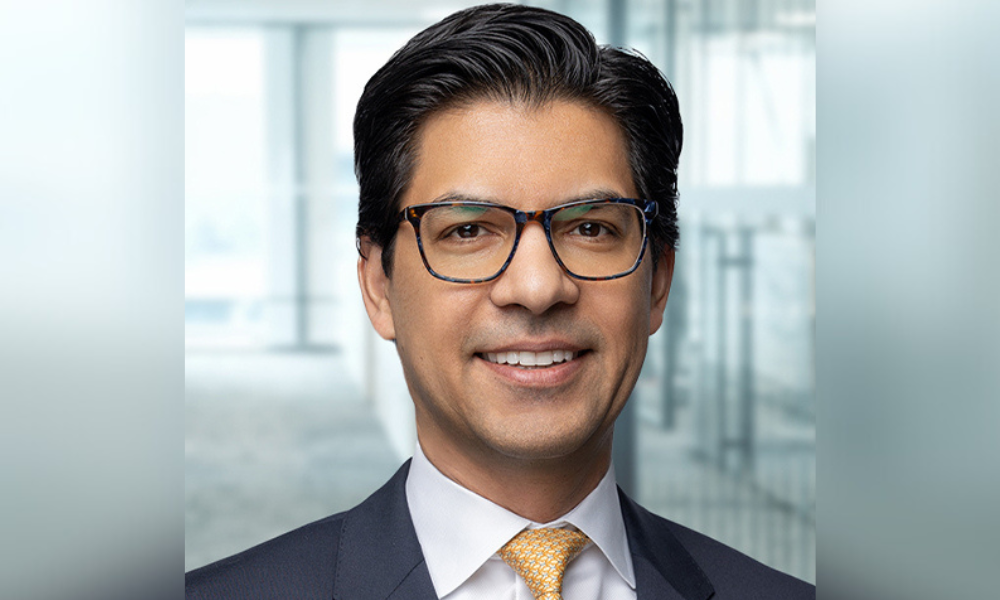In an interview with Bloomberg TV Canada, two health experts explain why a pay care system won’t solve the gaps in public healthcare delivery
All eyes are currently on Dr. Brian Day as he presents a constitutional challenge to Canada’s healthcare system. He argues that patients, who are suffering long wait times in the public system, should be allowed access to private services. However, two healthcare experts interviewed by Bloomberg TV Canada recently offered a different perspective.
Dr. Sacha Bhatia, Director of the Women’s College Hospital Institute for Health System Solutions and Virtual Care, explained that the argument doesn’t hold water in the face of empirical data. “The two arguments always raised are one, we can improve access for everybody, and the second is that it helps the sustainability of the healthcare system.”
On the first point, Bhatia cited studies showing that pay care in Quebec in Saskatchewan has not reduced wait lists in the public system, instead only shifting wait lists from those who can afford to pay to those that can’t. With regards to sustainability, Bhatia asserted that Day’s practice can’t actually cover for critical gaps and incapacities in public health. “[A] lot of what Dr. Day even does is sort of low-risk ambulatory surgery. That is not the major cost driver of the healthcare system.”
George Smitherman, Ontario’s former Health Minister, weighed in to say that the problems in healthcare delivery may stem at least partly from lack of accountability in measuring outcomes. “It’s [important for] transparency, but it’s also [important to maintain] accountability for the healthcare system so that they feel more and more pressure for those smaller percentage people who are falling through the cracks.”
He went on to lament an apparent lack of motivation to improve the healthcare system, saying that those who are part of it tend to just wait for federal funding before even attempting to innovate. “I think we have all of the places in our country to point to where we have achieved low-cost excellence… in my opinion, there’s too many people in healthcare who are dedicated to the idea that the changes that we seek and the improvements that we seek can only be achieved with more money.”
Both Bhatia and Smitherman agree that while there are problems with the public health system’s delivery of care to patients, the solution must come from fixing it. In their view, it would be best for the public system to stand as the main provider of care for Canadian citizens.
“I would see a homeless person right beside a CEO,” said Bhatia, describing a typical scene in Toronto General Hospital. “And the benefit is there’s this sense of share values that we’re all in it together, and there’s a public interest in ensuring that the care that we deliver in our healthcare system is optimal.”
Dr. Sacha Bhatia, Director of the Women’s College Hospital Institute for Health System Solutions and Virtual Care, explained that the argument doesn’t hold water in the face of empirical data. “The two arguments always raised are one, we can improve access for everybody, and the second is that it helps the sustainability of the healthcare system.”
On the first point, Bhatia cited studies showing that pay care in Quebec in Saskatchewan has not reduced wait lists in the public system, instead only shifting wait lists from those who can afford to pay to those that can’t. With regards to sustainability, Bhatia asserted that Day’s practice can’t actually cover for critical gaps and incapacities in public health. “[A] lot of what Dr. Day even does is sort of low-risk ambulatory surgery. That is not the major cost driver of the healthcare system.”
George Smitherman, Ontario’s former Health Minister, weighed in to say that the problems in healthcare delivery may stem at least partly from lack of accountability in measuring outcomes. “It’s [important for] transparency, but it’s also [important to maintain] accountability for the healthcare system so that they feel more and more pressure for those smaller percentage people who are falling through the cracks.”
He went on to lament an apparent lack of motivation to improve the healthcare system, saying that those who are part of it tend to just wait for federal funding before even attempting to innovate. “I think we have all of the places in our country to point to where we have achieved low-cost excellence… in my opinion, there’s too many people in healthcare who are dedicated to the idea that the changes that we seek and the improvements that we seek can only be achieved with more money.”
Both Bhatia and Smitherman agree that while there are problems with the public health system’s delivery of care to patients, the solution must come from fixing it. In their view, it would be best for the public system to stand as the main provider of care for Canadian citizens.
“I would see a homeless person right beside a CEO,” said Bhatia, describing a typical scene in Toronto General Hospital. “And the benefit is there’s this sense of share values that we’re all in it together, and there’s a public interest in ensuring that the care that we deliver in our healthcare system is optimal.”



